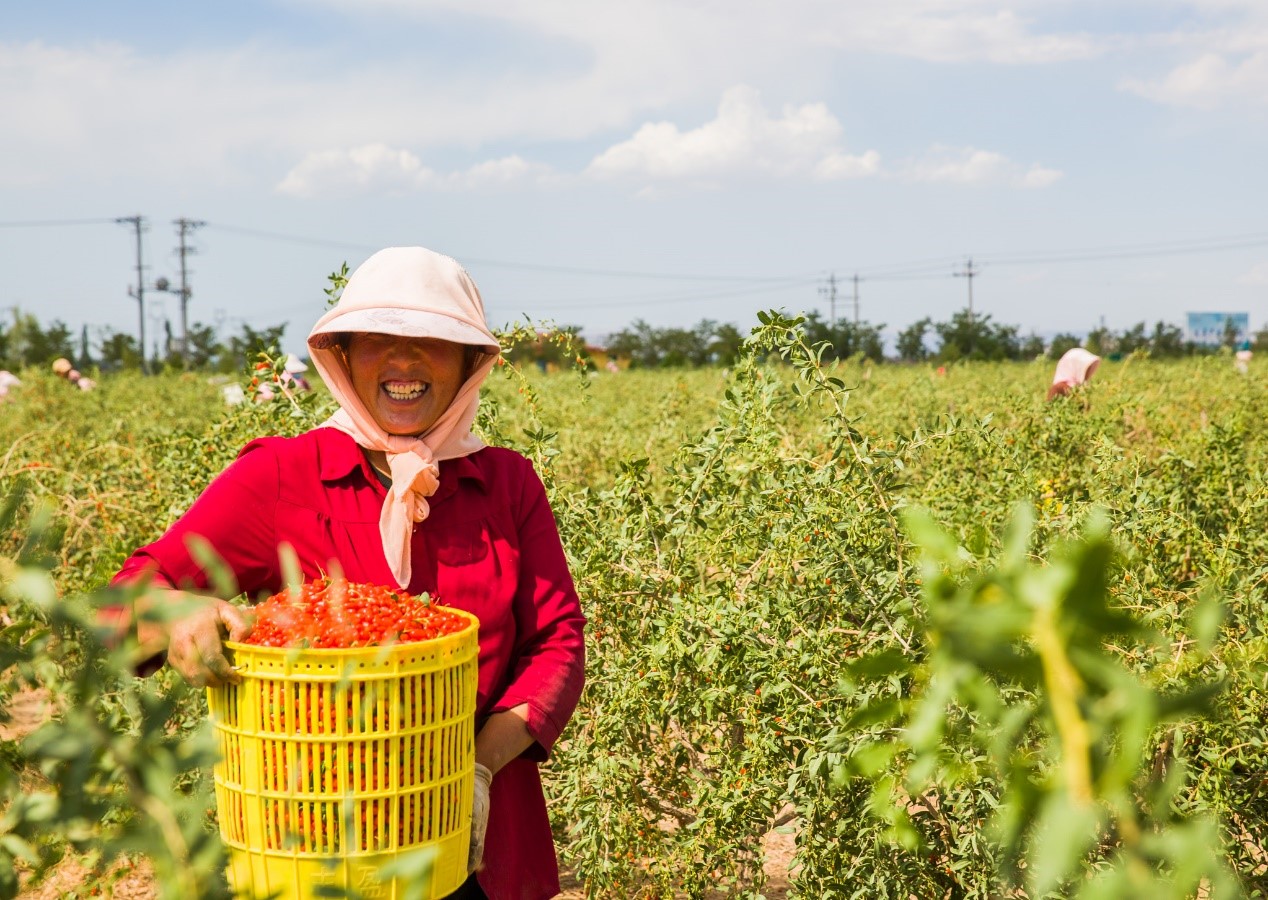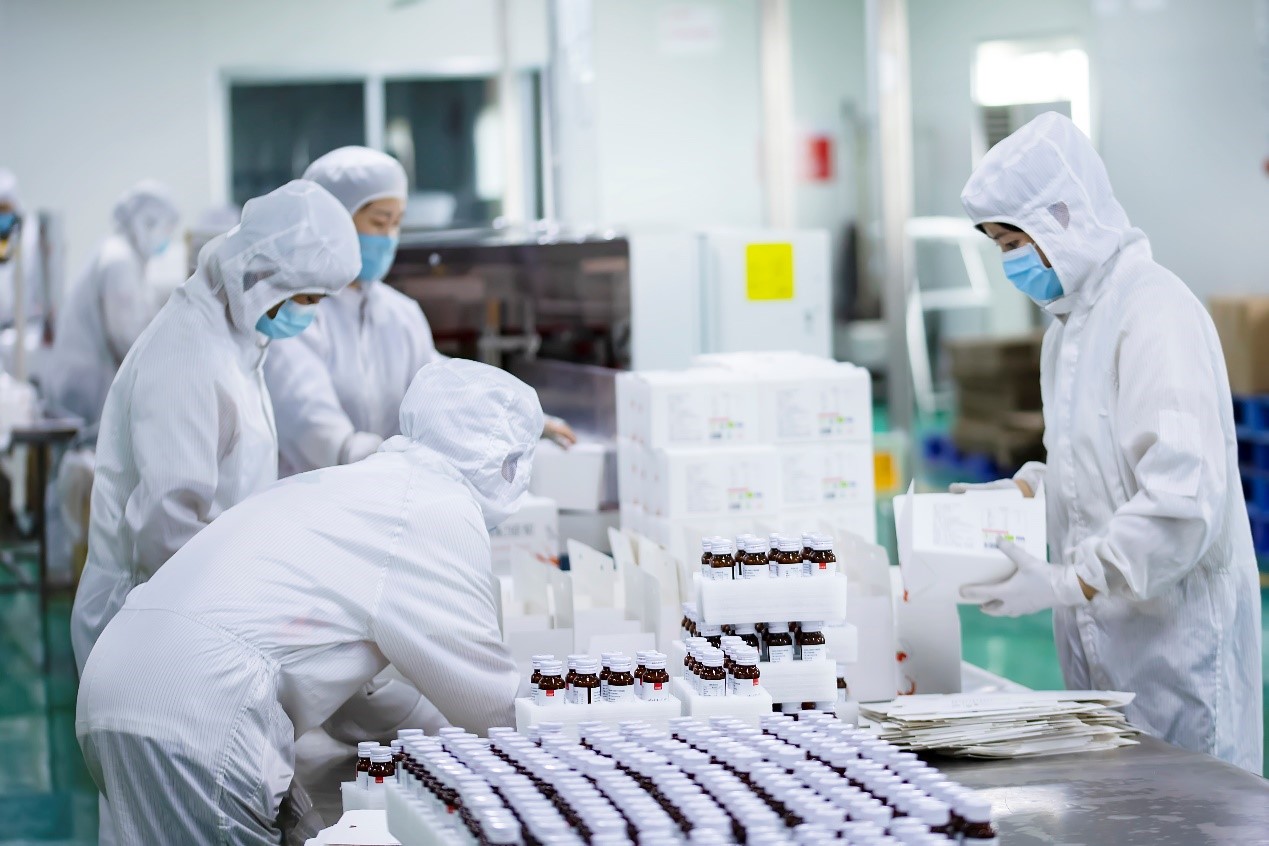From berries to wine, industry flourishes in Ningxia
Ningxia Hui Autonomous Region, in northwest China, has a dry climate. This poses challenges due to concerns about desertification, but it also creates an optimal environment for certain agricultural produce, including grapes and goji berries.
With limited rainfall, abundant sunshine and significant temperature fluctuations between day and night, this landlocked region has transformed its barren landscapes into a mosaic of flourishing fruit, enriching the lives of its residents.
Ningxia's burgeoning wine and goji berry sectors have become its vibrant new trademarks, highlighted in hues of purple and red.
Wineries with Chinese characteristics
Nestled at the eastern base of Helan Mountain, a swath of land now hosts more than a hundred wineries. Here, grapes are shielded from harsh winds and cold waves, benefiting from the waters of the Yellow River.

Photo taken on Sept. 23, 2023, shows an exhibition room at Xige Estate in Qingtongxia, Wuzhong, northwest China's Ningxia Hui Autonomous Region. (People's Daily Online/Chang Sha)
Wine bottles, adorned with an image of a pigeon from a painting by Emperor Huizong of the Song Dynasty (960-1279), line the shelves. This is a glimpse inside the exhibition room at Xige Estate, one of the wineries backed by Helan Mountain.
In 2017, the winery was established on a stretch of the Gobi desert, a place previously sparse with plant life. Today, it serves as a habitat for numerous wild animals.
The main building, constructed using nearly 200,000 stones from Helan Mountain, is round on the outside and square within, reflecting a deep reverence for nature and encapsulating ancient Chinese philosophy.
The presence of traditional Chinese culture can be felt in each and every detail of the winery. "Our logo captures the worn appearance of the prehistoric cliff paintings at Helan Mountain, and the Chinese characters on it imitate the style of the lost Tangut script," said Liu Qian, a brand ambassador for the winery.
With its vineyards spanning more than 30,000 mu (2,000 hectares), Xige Estate boasts a designed annual capacity of 10 million bottles, directly creating 1,500 jobs for neighboring villages each year.
Additionally, the winery is expanding its overseas market presence. It has received numerous global wine accolades, such as awards from Mundus Vini, and saw its exports increase by 500 percent year on year in 2022.

Aerial photo shows the site of Yuanshi Vineyard in Xixia district, Yinchuan, northwest China's Ningxia Hui Autonomous Region, taken in 2023. (Photo courtesy of the Publicity Department of the CPC Xixia district committee)
Yuanshi Vineyard, another winery situated at the foothills of Helan Mountain, was once a neglected mine pit. Today, it has transformed into an attraction for visitors eager to experience a blend of wine culture, eco-tourism, sports, and leisure activities.
Pseudo-classic buildings scattered among lush vegetation evoke the beauty of traditional Chinese gardens, while vine-woven ceilings and chairs converted from oak barrels underscore the winery's commitment to eco-friendly practices.
The array of reds and whites produced here carry unique Chinese names, some emphasizing the local terroir's role in cultivating premium grapes, like "Soul of Mountain," while others draw inspiration from ancient Chinese poetry.
"The winery produces a type of tea wine with three flavors, blending the aroma of tea and the texture of the wine, which are well received among young people," said a staff member of the Yuanshi Vineyard.
Next to the winery is a sports and leisure park that has undergone a transformation from mining subsidence to vibrant greenery. Within the park, various facilities, including a climbing gym and a ski resort, are under development, anticipated to offer more employment opportunities for the local community, as noted by the staff member.
Goji berry goods with higher added value
Zhongning county in Zhongwei city, situated in the heart of Ningxia, is renowned for its goji berries.
Goji berries, also known as wolfberries, are nutritionally rich and have been used for medicinal purposes in traditional Chinese medicine for over 2,000 years. Zhongning boasts a history spanning over 600 years of artificially cultivating these reddish-orange fruits. Due to the area's unique natural conditions, the goji berries grown here are of top-tier quality.
"My grandfather and father are goji berry growers, and I used to pick goji fruits when I was a child," said Yong Yuesheng, deputy general manager of Ningxia Love Goji Supply Chain Corporation, a company dedicated to providing goji berry supply chain management.
In the past, the majority of goji berries were turned into dried fruits, which brought modest profits for both companies and farmers. However, that dynamic is shifting as a broader range of derivative products becomes available.

A farmer displays a basket of freshly harvested goji berries in Zhongning county, Zhongwei, northwest China's Ningxia Hui Autonomous Region. (Photo courtesy of the Publicity Department of the CPC Zhongning County Committee)
"Every part of the goji berry – from roots and leaves to flowers and fruits – holds significant value," explained Yong. He added that the people of Zhongning have enhanced the plant's worth through years of hands-on experience.
Goji berries are now transformed into a range of products, including snacks, primary pulp, powder, and alcoholic beverages. This expanded product line underscores the increasing value of this nutrient-rich plant.
"One jin (500 grams) of dried fruit requires five jin of fresh berries. However, there's minimal loss when processing the berries into primary pulp, resulting in profits that are 2.4 times higher than those of dried fruits," Yong highlighted. He further noted that profits can surge up to a hundredfold when the berries are converted into alcohol.

Employees work on a production line of a goji berry company in Zhongning county, Zhongwei, northwest China's Ningxia Hui Autonomous Region. (Photo courtesy of the Publicity Department of the CPC Zhongning County Committee)
The application of technologies also serves the industry's upgrading.
"Through superfine grinding technology, we make the particles in the primary pulp smaller, ensuring almost all the nutritional content of goji berries is retained and offering a smooth and fine texture for tasters," said Jiang Wenting, a director at Zaokang, a leading player in China's goji berry industry.
The company has also developed a technique to produce freeze-dried goji berries. During the manufacturing process, fresh fruits are quickly frozen to maintain their color and appearance. Using a vacuum drying method, most nutritious substances are preserved without being affected by external pollution, Jiang explained.
In addition to exploring more edibles, goji berry businesses are venturing into the cosmetics sector, producing lipsticks and facial masks that are in demand among consumers.

Photo shows farmers picking goji berries in Zhongning county of Zhongwei, northwest China's Ningxia Hui Autonomous Region. (Photo courtesy of the Publicity Department of the CPC Zhongning County Committee)
Statistics show that Zhongni county has a goji berry planting area of about 180,000 mu, yielding an overall output value of more than 13 billion yuan ($1.78 billion) as of the middle of this year.
By fully leveraging natural resources, maximizing its strengths, and advancing innovation, Ningxia is poised for a promising future, rich with Chinese charm and local flavor.
Photos
Related Stories
- Desert tourist attractions fuel travel enthusiasm in NW China
- Yellow River gorge city morphs into eco-friendly wine-producing area
- In pics: Perseid meteor shower over Haba Lake nature reserve in NW China
- Job fair held for young talents, college graduates in Yinchuan
- Shapotou scenic spot in Ningxia witnesses peak tourism season during summer vacation
Copyright © 2023 People's Daily Online. All Rights Reserved.









